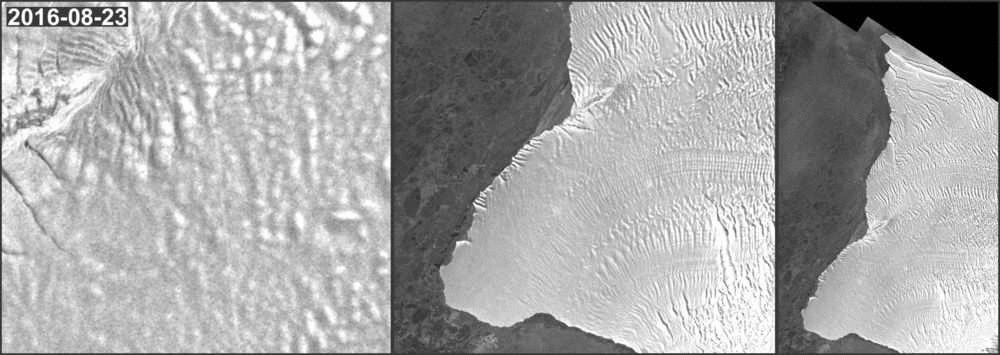Sentinel-1, the first Earth Observation mission in ESA’s Copernicus programme, is a constellation of two polar-orbiting, all-weather, day-and-night, synthetic aperture radar (SAR) satellites which are used to monitor ice and oceans as well as changes on land. Sentinel-1A was launched in April 2014, and was joined in orbit by 1B in April 2016. Together, they monitor the entire planet, passing over the same spot on the ground every 6 days.

CPOM uses Sentinel-1 data to closely monitor the flow of ice out of many large outlet glaciers in Greenland and Antarctica, to track the location of icebergs, and to measure the grounding line position – the boundary between ice shelves floating on the ocean and the grounded ice sheet.
Sentinel-1 data has already provided valuable scientific results, demonstrating for example how Greenland’s glaciers are flowing more slowly into the Arctic Ocean. While the general flow has reduced in recent years, in the summer glaciers flow up to 25% faster than in the winter. Jakobshavn Isbrae, which is Greenland’s fastest flowing glacier, reached a peak of 17 km per year in 2013, the result of an unusually warm summer. But Sentinel-1 shows that, on average, it has actually slowed down by 10% since 2012. This is overlaid by a seasonal pattern, with the glacier accelerating by up to 14% over a three-month summer period before slowing down again in winter.

Jakobshahvn Isbrae is continuously monitored by Sentinel-1 with results available via the CPOM ice velocity portal, where ice velocity data on key glaciers is made freely available to the scientific community.
We also use Sentinel-1 to monitor Antarctic ice shelves, which form when the grounded ice sheet flows out over the ocean, forming a floating platform of ice. Ice shelves in Antarctica are constantly changing due to ice flow causing the ice front to advance, or due to iceberg calving events which cases the ice front to retreat. This is an important process because although iceberg calving is a natural process, when whole ice shelves are removed this can trigger the grounded ice behind it to flow more quickly. Again, the results are available via the CPOM ice shelves portal.

Sentinel-1 imagery of the Brunt Ice Shelf
